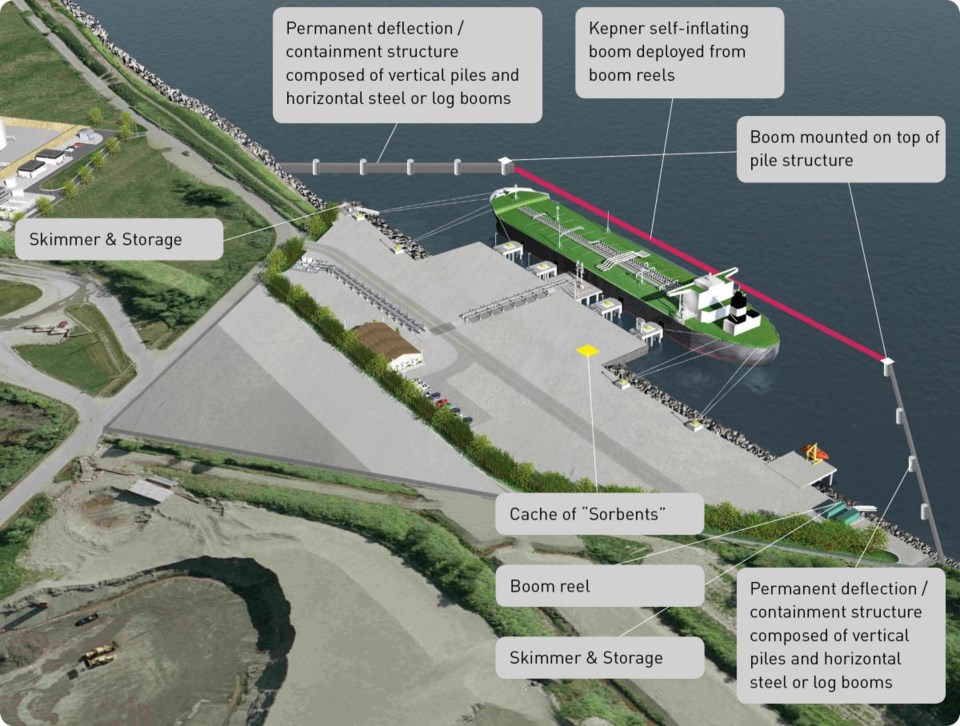Richmond residents will soon be able to get a front-row view of jet fuel being offloaded from tankers on the Fraser River in east Richmond.
Surrounded by newly-planted shrubs and trees, a small, public “viewing platform,” or dock, will be among the observable landscaped features nearby a new marine terminal that will feed an 80-million-litre jet fuel tank farm across the dyke at the end of Williams Road.
This week, city council reviewed the development (building) permits to Vancouver Airport Fuel Facilities Corporation (VAFFC) to build the contentious marine terminal that will supply fuel to Vancouver International Airport via a new pipeline that will run up Highway 99 and cross over north City Centre to Sea Island.
The project has already been approved by the provincial government and, as such, the municipal building permits are considered by the City of Richmond a legal formality as long as VAFFC is in compliance with municipal regulations.
The terminal is being built along the dyke, which is considered an Environmentally Sensitive Area (ESA). And so, a lengthy, 199-page document to council from the Development Permit Panel, outlines the extent to which project proponent VAFFC and the city have ensured construction complies with ESA standards and how the terminal will fit within the landscape. As such, city planners have asked to keep the waterfront dyke accessible to the public while also requesting a $62,000 viewing platform along the river, as part of the upgrades.
Director of Development Wayne Craig told the permit panel last month that the viewing platform will be constructed by the city at a later date and that the parks department will determine the exact location and ensure the design meets the city’s open space and trail objectives for the area, as it is city policy to keep the dyke publicly accessible.
The site will see native plants and trees planted, including a 200-square-metre intertidal plant marsh featuring baltic rush, lyngbye’s sedge, common cattail and common rush — all outlined in the permit document and reviewed by a VAFFC team of biologists.
Also, VAFFC will be raising the dyke where the terminal will be situated, as the city requires this to mitigate flood risks due to long-term sea-level rise from human-produced carbon emissions.
According to the VAFFC’s submission to the BC Environmental Assessment Office, the marine terminal facility will receive approximately one fuel tanker/barge each week. The standard vessel will have an average capacity of between 30 to 40 million litres of fuel from overseas markets.
Port of Vancouver approved the project after a study claimed fuel spills are a low, but acceptable, risk.
The airport already recieves jet fuel via the Kinder Morgan pipeline from Burnaby as well as truck shipments from Washington State.



